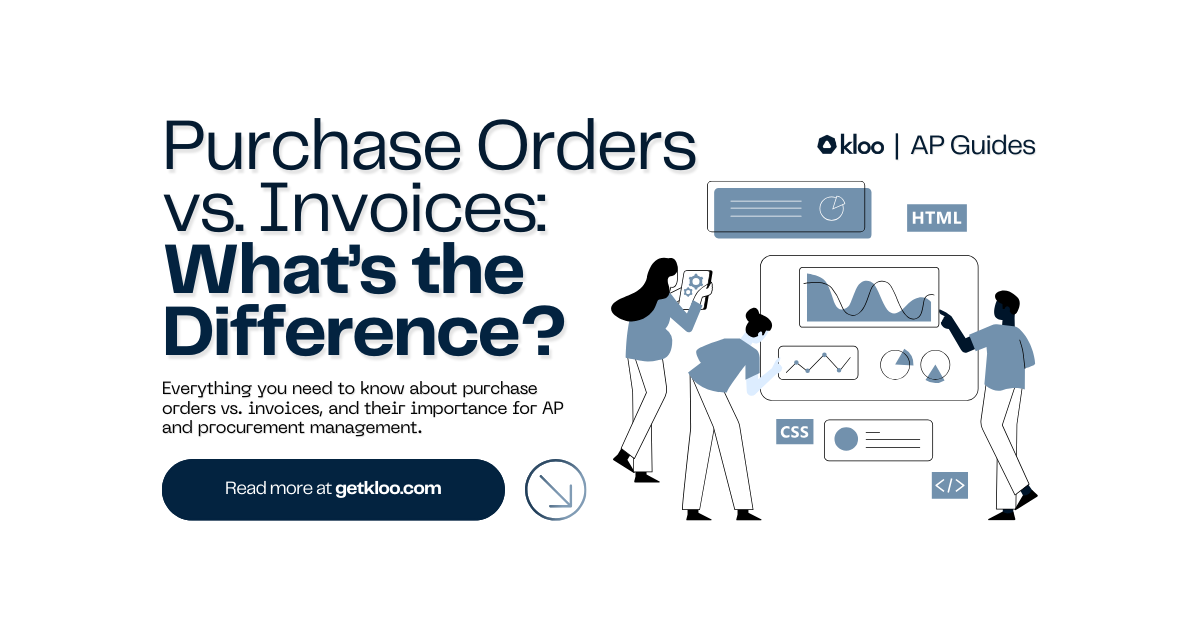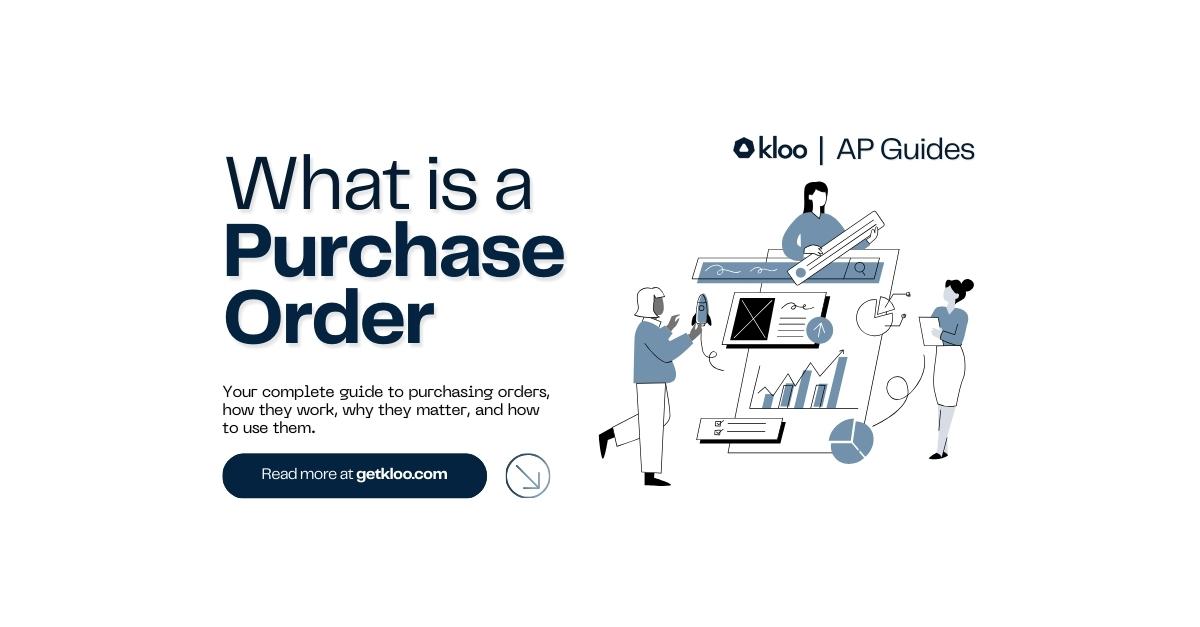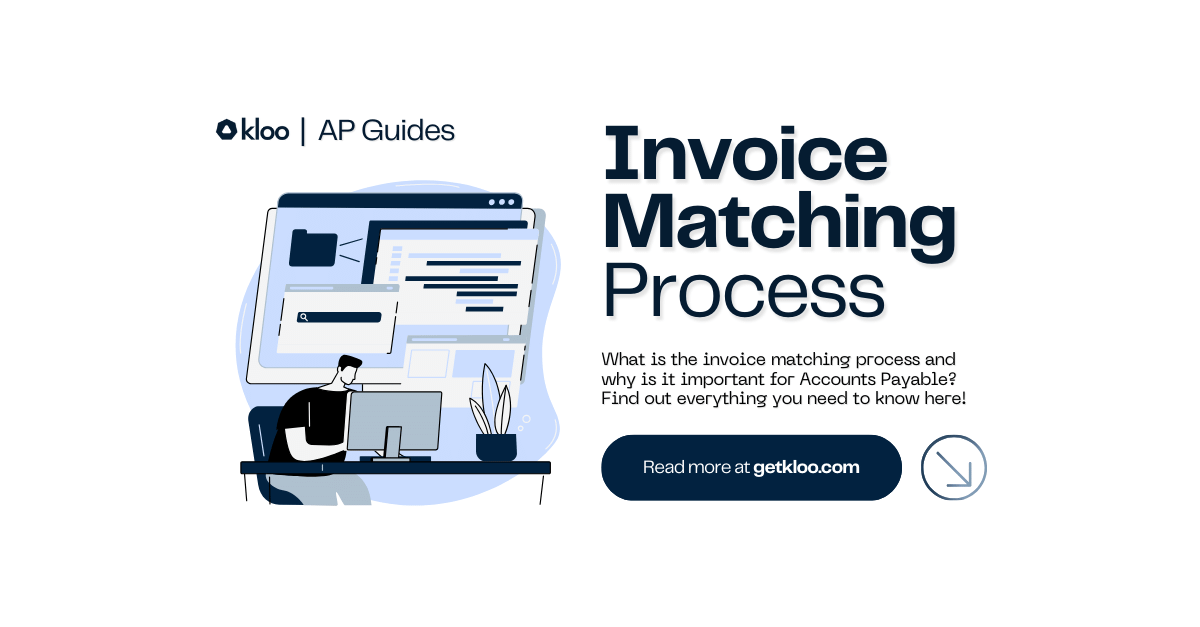Purchase Orders vs. Invoices: Everything You Should Know

In the world of business transactions, understanding the difference between purchase orders and invoices is crucial for smooth operations. Both documents are essential, but they serve different purposes and come into play at different stages of the Accounts Payable (AP) process. In this blog post, we'll dive into the role each one plays in the general procure-to-pay cycle, their similarities and differences, and how they make a significant impact on enhancing visibility and control over spend, especially when leveraging AI to drive automation across management.
What is a Purchase Order?
A purchase order (PO) is an official document sent by a buyer to a seller, outlining the specifics of a purchase. It details the items or services required, the agreed-upon prices, quantities, delivery dates, and payment terms. Once accepted by the seller, the PO becomes a legally binding contract. Essentially, a purchase order initiates the buying process, ensuring that both parties are on the same page regarding the transaction.
What is an Invoice?
An invoice, on the other hand, is a document issued by a seller to the buyer after the goods or services have been delivered or completed. The invoice details the items provided, their prices, any applicable taxes, discounts, and the total amount due. Unlike a purchase order, an invoice requests payment and concludes the transaction. It is not a legally binding document but serves as a formal payment request.
Key Differences Between Purchase Orders and Invoices
- Timing: A purchase order is created before the transaction, while an invoice is generated afterward.
- Purpose: Purchase orders confirm the buyer's intent to purchase, whereas invoices request payment.
- Content: Purchase orders detail the purchase agreement, while invoices outline what was delivered and what is owed.
- Legality: Purchase orders are legally binding once accepted, while invoices are not.
- Direction: Purchase orders are sent from buyer to seller, whereas invoices flow from seller to buyer.
Why Both Are Important
Both purchase orders and invoices play critical roles in the financial and logistical aspects of a business. Purchase orders help ensure that goods and services are acquired as needed, avoiding misunderstandings and discrepancies. Invoices, on the other hand, are vital for tracking payments, managing cash flow, and maintaining accurate financial records.
For businesses like Kloo, understanding and efficiently managing these documents is essential to maintaining smooth operations and healthy supplier relationships.
This distinction helps companies like Kloo keep their operations well-organised, ensuring that they order and pay for what they actually need and receive.
Benefits of Using Both Purchase Orders and Invoices
-
Enhanced Cost Control: By creating and approving POs, companies can prevent duplicate orders and unnecessary subscriptions. POs help consolidate requests across departments, streamline procurement, and enable volume discounts. When an invoice is received, it can be cross-checked against the PO to avoid duplicate payments and ensure accurate financial management.
-
The Trail for Each Order: A PO allows tracking the order’s status from placement to delivery using the PO number. This keeps all relevant parties in the loop about their purchases.
-
Confidence in Agreed-Upon Terms: POs serve as proof of the agreed pricing, protecting the buyer if the supplier changes prices later. They act as legally binding documents, ensuring both parties adhere to the transaction terms.
-
Clear Inventory Visibility: POs assist in inventory management by providing visibility into purchases. This helps companies determine when orders were made and when to replenish stock, preventing overstocking and ensuring timely delivery.
Streamlining PO and Invoice Management with AI Automation
AI automation solutions like Kloo can significantly streamline purchase order and invoice management by reducing reliance on manual processes. A centralised document repository provides easy access to all POs and invoices, ensuring transparency and efficient tracking. Automated 2- and 3-way matching between POs and invoices helps identify discrepancies quickly, while OCR and advanced AI data extraction eliminate human errors in data entry. Customisable approval workflows enhance clarity in the approval process, and the ability to generate customised reports from PO and invoice data allows for better financial insights and decision-making. This level of automation not only speeds up processes but also ensures accuracy and consistency across the board.
Let's get started


